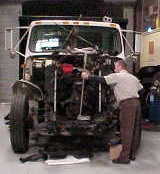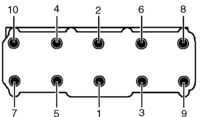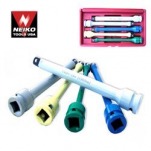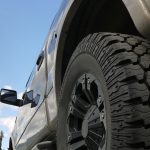Every bolt has a torque spec, and some of these are very critical, and some not so much.
An example of bolt torque specification that should be respected would be when you replace a water pump.
Find Your Online Car Repair Manual Today! ->>
The individual retaining bolts will more than likely have at least one torque spec, but might even have multiple torque specs.
Water pumps that mount to a timing cover will have long and short bolts.
The long bolts that screw into the engine block will have much higher torque values than the short ones that just thread into the timing cover.
Over tightening the short bolts can damage the timing cover, and the gaskets or seals.
The new Teflon sealant applied to the clean bolt assures a smooth bolt torque procedure.
If you rush and jam the dirty bolts into the block threads damage to the threaded hole may occur. Also the binding threads will throw off the bolt torque setting.
Over tightening bolts is bad
The gaskets themselves are made of plastic with sealing strips. The torque specification for the manifold bolts are very low (around 14 foot pounds) but don’t quote me on that number because it will depend on the year the engine was built.
If you go too far beyond the spec you will crack the composite gasket and will have a more serious leak than the one you had to begin with.
This repair is very hard and time consuming. Performing this auto service more than once can be very frustrating for diy auto mechanics.
Lug nut torque
When you over tighten the lug nuts or have a UN even torque you will start to warp the composite rotor. This will result in a very annoying brake pulsation. Replacement of the brake rotors themselves is usually required to correct the condition.
You may have seen your mechanic using an air powered impact gun on your lug nuts. If your mechanic knows what he is doing he will have a torque stick on the end of his gum.
This tool is specifically designed to twist and give when the proper torque is reached. A torque stick is pictured on the upper left.
If your car mechanic does not use this you should get your own torque wrench and check for the proper setting. The procedure would be to back off each individual lug nut one at a time about a half turn. Then tighten it to specs with a click type torque wrench.
This might not only save your composite brake rotors but just think how happy you will be if you get a flat tire. For exact specifications and bolt torque for vehicle pick up an online auto repair manual.









